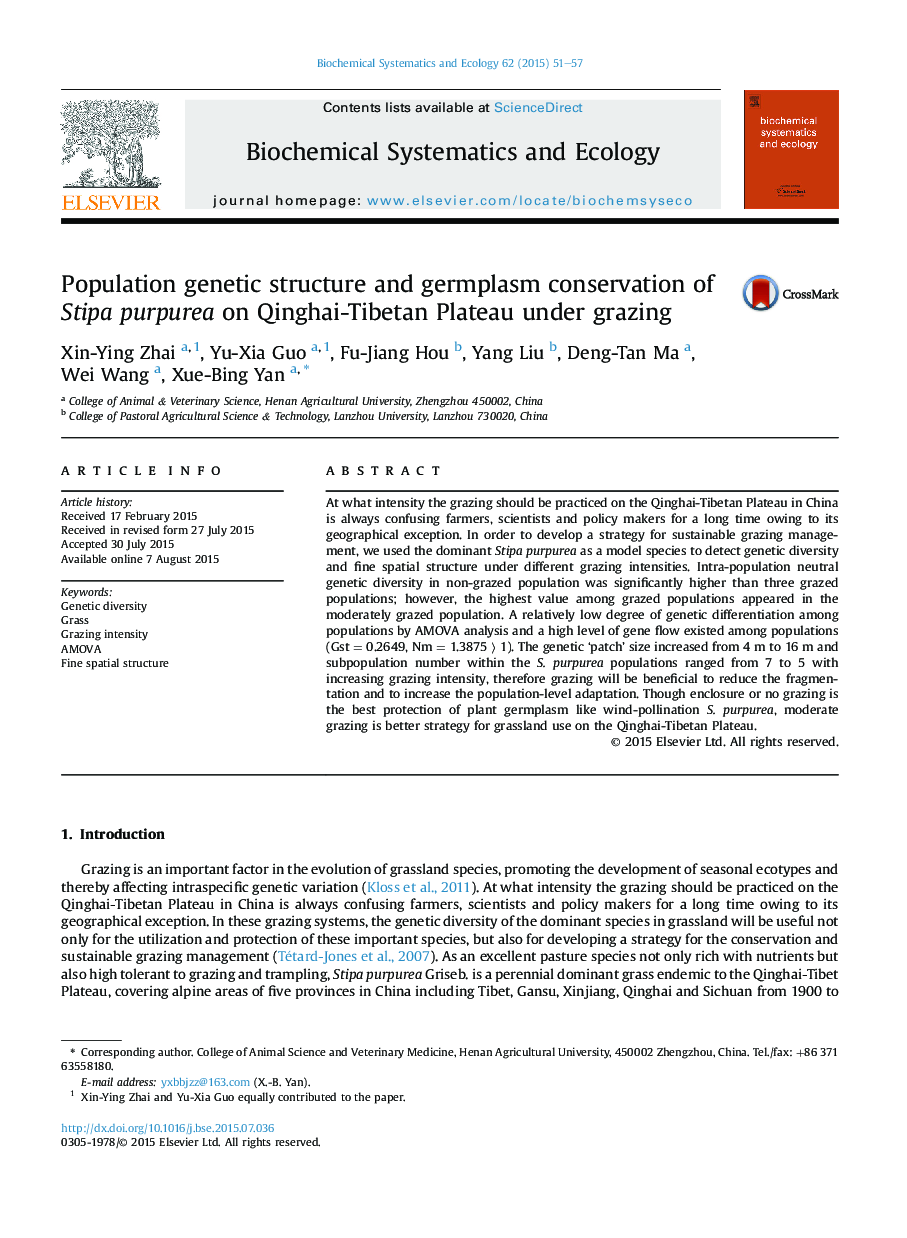| Article ID | Journal | Published Year | Pages | File Type |
|---|---|---|---|---|
| 1351268 | Biochemical Systematics and Ecology | 2015 | 7 Pages |
•The highest intra-population genetic diversity of grazed populations appeared in the moderately grazed population.•A relatively low degree of genetic differentiation and a high level of gene flow existed among populations.•The genetic ‘patch’ size increased from 4 m to 16 m and subpopulation number ranged from 7 to 5 with increasing grazing intensity.•Moderate grazing is better strategy for grassland use on the Qinghai-Tibetan Plateau.
At what intensity the grazing should be practiced on the Qinghai-Tibetan Plateau in China is always confusing farmers, scientists and policy makers for a long time owing to its geographical exception. In order to develop a strategy for sustainable grazing management, we used the dominant Stipa purpurea as a model species to detect genetic diversity and fine spatial structure under different grazing intensities. Intra-population neutral genetic diversity in non-grazed population was significantly higher than three grazed populations; however, the highest value among grazed populations appeared in the moderately grazed population. A relatively low degree of genetic differentiation among populations by AMOVA analysis and a high level of gene flow existed among populations (Gst = 0.2649, Nm = 1.3875 〉 1). The genetic ‘patch’ size increased from 4 m to 16 m and subpopulation number within the S. purpurea populations ranged from 7 to 5 with increasing grazing intensity, therefore grazing will be beneficial to reduce the fragmentation and to increase the population-level adaptation. Though enclosure or no grazing is the best protection of plant germplasm like wind-pollination S. purpurea, moderate grazing is better strategy for grassland use on the Qinghai-Tibetan Plateau.
